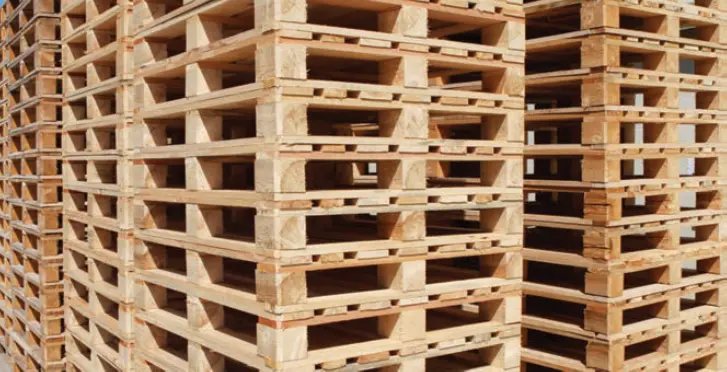
Most people in the UK have been desperate for a respite from months of rain – not least those in the fencing sector.
The rain that persisted across the UK from late autumn through to early April means the 2024 fencing season was generally slow to start.
The month of March – which usually marks the start of the fencing season – may have been the hottest on record but it was also wet, and followed a winter of prolonged and heavy rain.
The result was saturated ground that on the domestic scene did not entice people out into their gardens, and in the agricultural sector prevented fencing contractors from moving heavy plant and equipment onto land.
Added to this, Easter – usually the point when fencing demand really ramps up – fell early this year and at the tail end of the rainy weather.
While one sawmiller reported “an extraordinary level of demand” in the run-up to Easter, others were less positive.
Several contacts saw a brief uplift in demand in February after a few weeks of milder weather but this was followed by more rain which, literally, dampened demand.
By the time Storm Kathleen blew through in early April, the UK had been hit by 11 storms. While some in the industry feel storms create an unhealthy spike in the market and put stresses on the supply chain, others welcome the work they bring.

“We have been busy on the back of the named storms we had at the beginning of the year, which has carried us through, along with our usual works,” one contact told TTJ.
He added that both his supply, and supply and fit work were on a par, or slightly better than the previous few years.
A sawmiller said the storms kickstarted the season earlier than expected, despite the sodden ground and high rainfall – and took them by surprise.
“Stock levels at the end of last year were below normal and strong demand so early in the season wrong-footed us,” he said.
He added that the persistent rain had impacted activity levels but, nonetheless, demand was strong.
Another contact acknowledged the wet winter had created difficulties for fencing installation, but also felt demand was now higher than this time last year.
Some businesses supplying fencing to the major housebuilders are sensitive to the dent created by fewer housing starts. A sawmiller said, however, the slower construction sector could work in fencing’s favour as merchant customers look to replace lower sales of construction timber with fencing and landscaping products.
Overall, contacts agreed there was pent-up demand for fencing and, once the weather became more settled, sales would be up on last year.
“If we get a sustained dry period, trade will pick up, indeed could rocket up,” said one trader.
That’s good news for a market that must be reduced after the frenzy of Covid lockdowns, when demand was so high that the supply chain could barely keep up.
“Demand for landscaping and fencing during Covid was off the scale and there’s only so much money in the economy for fencing,” said a merchant.
If demand does suddenly take off, there are concerns there could be supply issues.
“We’re getting lots of indications from suppliers that there are significant log supply shortages in the market because it’s been difficult getting timber out of forests that are absolutely saturated. In June/July we could see some shortfalls, which could push the prices up,” said one trader.
On the flip side, however, if poor weather stymies early summer demand, by later in the season many people lose the impetus for major work in their gardens, plants are covering fences in need of repair, or people are more focused on summer holidays.
A sawmiller said a combination of low inventories at the end of last year and “unprecedented” demand in the first quarter meant stock levels were already under pressure – and could become more so, despite mills being flat out on production.
“Given demand is expected to improve along with the arrival of spring weather, satisfying demand will be a challenge,” he said.
There are also plenty of other distractions this year, but one trader remained confident it would be a good year for fencing.
“I predict we will have a better year than last year. When everything has settled – national insurance decreases, energy costs, interest rates and the general election – we will be on for better times,” he said, adding that the market needed steady and sustainable price increases rather than the instability of “mad price increases/decreases”.
“Lead times for a couple of suppliers has increased, and one or two would like a minor increase but we won’t react to that. We will stay the same to give customers confidence when quoting forward,” he said.
Generally, prices are fairly stable at present, having recovered from a pre- Christmas fall – almost to pre-Covid selling prices for featheredge and arris rails. Take inflation into account, however, and prices have not progressed.
In terms of product demand, waney edge panels are still popular for those on a tighter budget, and closeboard fencing for those with more money to spend. There has also been a noticeable increase in demand for Venetian or slatted fencing, which offers a more contemporary look.
“Venetian fencing is remaining popular and is here to stay,” said one contact, but he added that consumers’ attitude to spending had changed.
“The cost-of-living crisis has made people a little cautious in their approach to projects. Rather than saying ‘Yes, get on with it all’, now they seem to be doing it in stages, as and when the funds are available,” he said.
A merchant was heartened to report his customers now had an established understanding of UC4 and would check their purchases met the treatment requirements. Thanks to the hard work of the treatment sector and those selling treated timber, customers now understood the importance of UC4, he said.
The experience of one sawmiller was the opposite, however.
“The trend is there is more focus on price than specification and performance,” he said. “Customers appear to be more willing to accept an inferior UC3 treated post, which is not suitable for ground contact applications, than focusing on a UC4 product that offers performance, value for money and longevity.”
The result, he said, was that premature failures and poor practice continued to impact on timber’s reputation as a material of choice.
Since the UK has experienced Covid, political turmoil, high inflation and the cost-of-living crisis it is almost impossible to know what a normal year’s trading now looks like, but a sawmiller described the first quarter as “most definitely not normal”.
“In November we experienced record inflation levels, increased interest rates and despondency in the housing market. Predictions for 2024 were understandably gloomy. Thankfully, what we are experiencing is far more encouraging,” he said.
And if the market is now more difficult to predict, so too is the weather, and its effect on business.
While the fencing sector is waiting for dry conditions to be established this year, they may have to accept that wet winters are the new normal as rainfall is expected to increase as a result of climate change, and wetter, warmer winters are predicted in the UK.
Figures released by the Met Office in early April revealed that in the 18 months from October 2022 to March 2024, England had the highest amount of rainfall since records began in 1836; and for the UK as a whole it was the fourth wettest period.
Perhaps higher rainfall, and less predictable demand, are now the new normal.
Challenges Continue For Pallets And Packaging
The economic downturn and the decline in housebuilding have reduced demand for pallets
According to TIMCON, demand for wooden pallets and packaging is currently “sporadic”, with requirements for certain sizes extending lead times from sawmills.

Log availability issues in the UK and Ireland – and some other markets – has caused prices to rise further during this quarter. While demand from the construction industry has picked up slightly, the increase is “nowhere near normal” for this time of the year.
According to FEFPEB secretary-general Fons Ceelaert, in recent months, its European wooden pallet and packaging association members have reported that volumes of wooden packaging and pallets have dropped by an average of approximately 20-25%.
“This has come from a high in volumes, so a downward trend was expected,” he said. “However, factors including the current geopolitical turmoil make the future for the economy more uncertain.”
FEFPEB’s membership has reported that timber prices have been fairly stable.
TIMCON is continuing to monitor market fluctuations, and to keep its members informed of developments. The organisation is collaborating with Defra, which has pledged to introduce a reuse incentive scheme for wooden pallets and packaging as a way of keeping emissions down and further increasing the sustainability of supply chains using these products.
TIMCON’s latest UK Wood Pallets & Packaging Market study, released earlier this year, showed new pallet production is now 45.3 million annually, a fall of 7%. Pallet repairs, meanwhile, increased by 1.7% to 48.9 million. It plans to bring the publication date forward this year to reduce uncertainty around production volumes and help inform discussions with government departments on key environmental and other legislation.
TIMCON is also working with Defra and stakeholders to clarify new Extended Producer Responsibility (EPR) regulations and is involved with FEFPEB in the defining of new EU packaging regulations, too.
The wooden pallet and packaging market faces challenges in the face of economic fluctuations, reduced demand from several sectors, and regulatory changes. However, industry associations including TIMCON and FEFPEB are actively working with stakeholders to navigate the evolving landscape and address these issues.
These are challenges the sector has been grappling with for nearly a year.
The UK wooden pallet and packaging market experienced a temporary relief in the first half of 2023 as timber prices dropped by 6.4%, but new challenges emerged, particularly with the decline in the construction sector, a major consumer of pallets. Housebuilding output fell, exacerbating the situation, compounded by a 17% forecast fall in private housing, despite the need for 340,000 new homes annually in England.
Economic factors further strained the industry, with interest rates reaching a 14-year high of 5.25%, impacting mortgages and the cost of living. Although inflation decreased, it remained high. Consequently, many sectors using pallets reported up to a 20% decrease in profits.
Despite these challenges, the garden and home improvement businesses saw a boost with good weather in May and June in 2023. However, overcapacity in sawmills and reduced demand led to cheaper timber, causing a decline in selling prices and profit margins.


